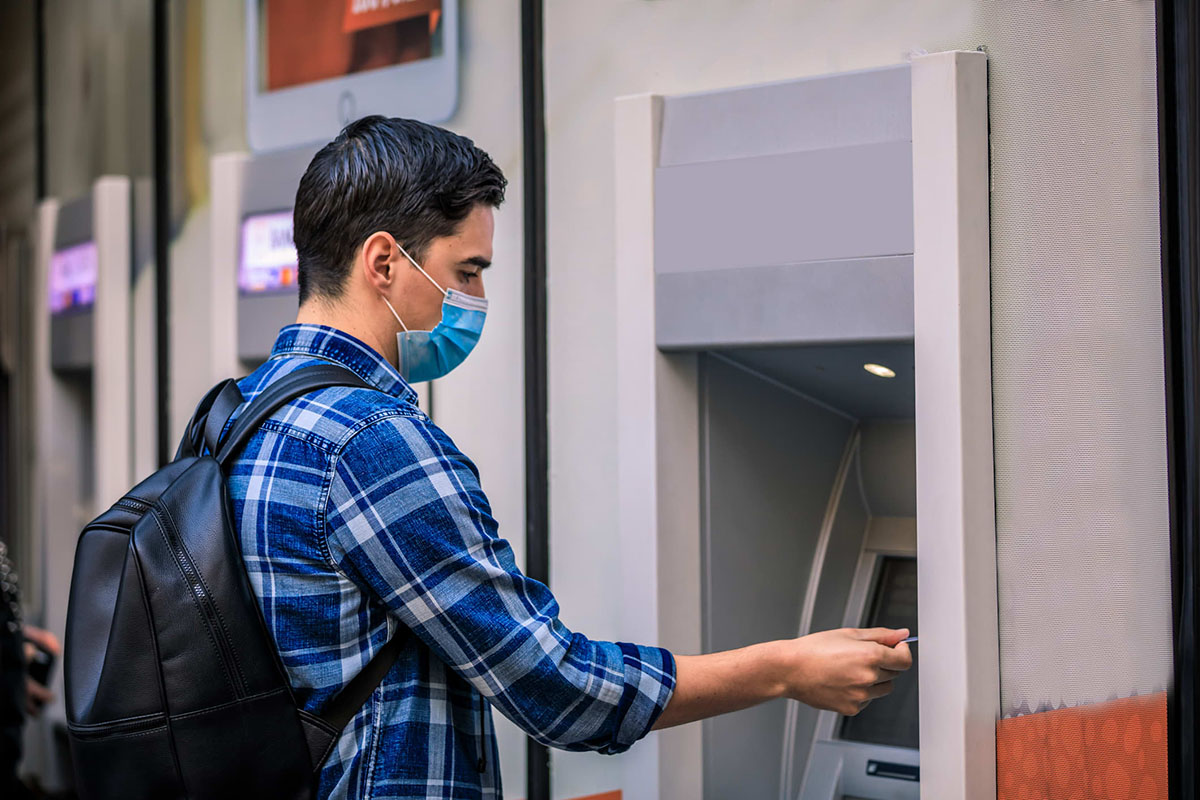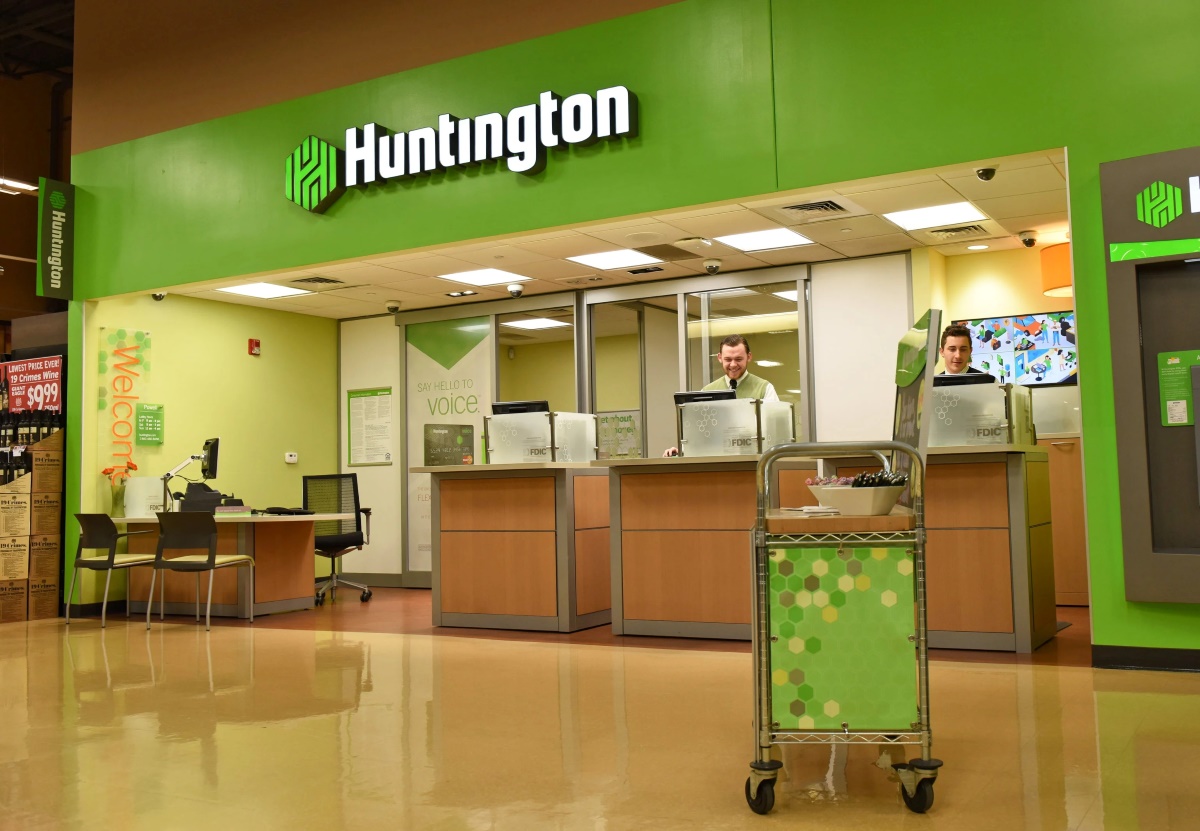

Finance
Which Bank Has The Best Fraud Protection?
Published: February 19, 2024
Find out which bank offers the best fraud protection in the finance industry. Protect your finances with top-notch security measures.
(Many of the links in this article redirect to a specific reviewed product. Your purchase of these products through affiliate links helps to generate commission for LiveWell, at no extra cost. Learn more)
Table of Contents
**
Introduction
**
In today's digital age, where financial transactions are predominantly conducted online, the importance of robust fraud protection in banking cannot be overstated. As more and more consumers rely on online banking, mobile payments, and e-commerce, the risk of fraudulent activities such as identity theft, unauthorized transactions, and phishing scams has escalated. In response to these evolving threats, banks have implemented various measures to safeguard their customers' accounts and sensitive information.
Fraud protection in banking encompasses a wide range of security protocols and technologies designed to detect and prevent unauthorized access and fraudulent activities. From multi-factor authentication and real-time transaction monitoring to advanced encryption and biometric identification, banks employ a diverse arsenal of tools to fortify their defenses against cybercriminals.
In this article, we will delve into the realm of fraud protection in banking, shedding light on the pivotal role it plays in safeguarding customers' assets and maintaining trust in the financial system. We will explore the factors that individuals and businesses should consider when evaluating the efficacy of fraud protection measures offered by banks. Furthermore, we will conduct a comparative analysis of the fraud protection measures employed by some of the leading banks, providing insights into their strengths and weaknesses in this critical area.
As we embark on this exploration, it becomes evident that the landscape of fraud protection in banking is dynamic and multifaceted, demanding continuous innovation and adaptation to counter emerging threats. By gaining a deeper understanding of the strategies and technologies employed by banks to combat fraud, consumers and businesses can make informed decisions when selecting a financial institution that prioritizes the security of their assets and personal information.
Importance of Fraud Protection in Banking
Fraud protection is a cornerstone of trust and security in the banking industry. As financial transactions increasingly shift to digital platforms, the need for robust fraud protection measures becomes paramount. The repercussions of falling victim to fraud can be financially devastating for individuals and detrimental to the reputation of financial institutions. Therefore, it is imperative for banks to proactively implement and continually enhance fraud protection mechanisms to mitigate risks and safeguard their customers’ assets.
One of the primary reasons why fraud protection is crucial in banking is to uphold the integrity of the financial system. By deterring and mitigating fraudulent activities, banks maintain the confidence of depositors, investors, and other stakeholders, thereby preserving the stability and credibility of the entire banking ecosystem. Moreover, effective fraud protection measures contribute to the prevention of money laundering, terrorist financing, and other illicit activities, reinforcing the overall security of the financial sector.
From the perspective of individual customers, fraud protection instills a sense of confidence and peace of mind, fostering long-term relationships with their chosen financial institutions. The assurance that their accounts and transactions are shielded from unauthorized access and fraudulent schemes bolsters trust and loyalty. For businesses, robust fraud protection is essential for safeguarding corporate accounts, preventing financial losses, and upholding the reputation and trust of their clients and partners.
Furthermore, in an interconnected global economy, where cross-border transactions are commonplace, effective fraud protection measures facilitate secure and seamless international financial activities. They enable businesses to engage in trade and investment with confidence, knowing that their financial transactions are shielded from exploitation by cybercriminals and fraudsters.
Ultimately, the importance of fraud protection in banking extends beyond financial considerations; it is intricately linked to the broader aspects of trust, security, and confidence in the financial system. By prioritizing robust fraud protection measures, banks not only mitigate risks and protect their customers but also uphold the fundamental principles of integrity and reliability that underpin the foundation of modern banking.
Factors to Consider in Evaluating Fraud Protection
When evaluating the effectiveness of fraud protection offered by banks, several key factors warrant consideration. These factors encompass the technological, procedural, and customer-centric aspects of fraud prevention and detection, providing a comprehensive framework for assessing the robustness of a bank’s security measures.
First and foremost, the strength of a bank’s authentication and access control mechanisms is a critical factor. Multi-factor authentication, biometric identification, and robust password policies are indicative of a bank’s commitment to fortifying the authentication process, thereby reducing the likelihood of unauthorized access to customer accounts.
Real-time transaction monitoring capabilities are equally vital. Banks equipped with advanced monitoring systems can swiftly identify and respond to suspicious activities, such as unusual transaction patterns or large transfers, enhancing their ability to thwart fraudulent attempts in a proactive manner.
Encryption and data security protocols constitute another pivotal aspect. Banks employing state-of-the-art encryption technologies and stringent data protection measures demonstrate a proactive stance in safeguarding customer information, thereby reducing the vulnerability of sensitive data to cyber threats.
Moreover, the transparency and efficiency of a bank’s fraud reporting and resolution processes are key considerations. Clear communication channels, expedited resolution of fraudulent incidents, and comprehensive fraud liability policies contribute to a positive customer experience and instill confidence in the bank’s ability to address and rectify fraudulent activities effectively.
Customer education and awareness initiatives represent an often-overlooked yet crucial aspect of fraud protection. Banks that prioritize educating their customers about common fraud schemes, security best practices, and the importance of vigilance in online transactions contribute to the overall resilience of their fraud protection framework.
Lastly, the adaptability and innovation of a bank’s fraud protection measures in response to evolving threats and technological advancements are indicative of its long-term commitment to combating fraud. The integration of artificial intelligence, machine learning, and predictive analytics into fraud detection systems reflects a forward-thinking approach to staying ahead of emerging fraud trends.
By considering these multifaceted factors, individuals and businesses can make informed assessments of a bank’s fraud protection capabilities, empowering them to select a financial institution that aligns with their security needs and priorities.
Comparison of Fraud Protection Measures Among Top Banks
When comparing the fraud protection measures employed by leading banks, it becomes evident that each institution adopts a unique approach to fortifying its security framework. By examining the strategies and technologies utilized by top banks, individuals and businesses can gain valuable insights into the strengths and differentiating factors of each institution’s fraud protection measures.
Bank A distinguishes itself through its robust multi-factor authentication protocols, which encompass biometric identification and dynamic security codes. This proactive approach to authentication enhances the security of customer accounts and mitigates the risk of unauthorized access.
In contrast, Bank B leverages advanced real-time transaction monitoring systems, utilizing machine learning algorithms to detect and respond to anomalous transaction patterns promptly. This proactive monitoring capability enables the bank to swiftly identify and mitigate potential fraudulent activities.
Bank C prioritizes encryption and data security, employing end-to-end encryption for all online and mobile transactions. By implementing stringent data protection measures, the bank reduces the susceptibility of customer information to unauthorized access and cyber threats.
Furthermore, Bank D excels in customer education and awareness initiatives, offering comprehensive resources and interactive training modules to educate customers about common fraud schemes and best practices for secure online transactions. This proactive approach empowers customers to recognize and mitigate potential threats effectively.
Moreover, Bank E demonstrates a commitment to innovation by integrating artificial intelligence and predictive analytics into its fraud detection systems. By leveraging cutting-edge technologies, the bank enhances its ability to preemptively identify and thwart emerging fraud trends.
While each bank exhibits distinct strengths in its approach to fraud protection, it is essential for individuals and businesses to align their specific security needs and preferences with the offerings of these financial institutions. By evaluating the comparative advantages of each bank’s fraud protection measures, customers can make informed decisions when selecting a banking partner that prioritizes the security of their assets and personal information.
Conclusion
In conclusion, fraud protection stands as a cornerstone of trust, security, and integrity in the realm of banking. As the prevalence of digital transactions continues to proliferate, the imperative of robust fraud protection measures becomes increasingly pronounced. The significance of fraud protection extends beyond financial considerations, encompassing the preservation of trust in the financial system and the safeguarding of individuals’ and businesses’ assets.
When evaluating the efficacy of fraud protection measures offered by banks, it is essential to consider a diverse array of factors, including authentication protocols, transaction monitoring capabilities, encryption and data security, fraud reporting and resolution processes, customer education initiatives, and the adaptability of fraud protection measures in response to evolving threats.
By conducting a comparative analysis of the fraud protection measures among top banks, individuals and businesses can gain valuable insights into the distinctive strengths and approaches of each institution. Whether it is through robust authentication protocols, advanced transaction monitoring systems, stringent data security measures, proactive customer education initiatives, or innovative technologies, each bank presents unique value propositions in the realm of fraud protection.
Ultimately, the selection of a financial institution hinges on the alignment of its fraud protection capabilities with the specific security needs and preferences of customers. By prioritizing robust fraud protection measures, banks reinforce the trust and confidence of their customers, contributing to the resilience and credibility of the entire banking ecosystem.
As the landscape of fraud continues to evolve, it is imperative for banks to remain vigilant and adaptive, continually enhancing their fraud protection measures to counter emerging threats effectively. By fostering a culture of innovation, transparency, and customer-centric security, banks can fortify their defenses against fraud and uphold the fundamental principles of trust and reliability that underpin the essence of modern banking.














